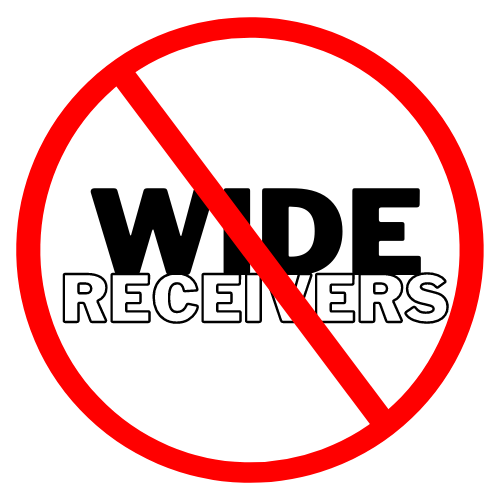Fantasy football has plenty of effective strategies when building a team. One of these strategies is the ‘Zero WR’.
Everyone has their own way to build their fantasy football team. You may be familiar with the Zero RB strategy.
Zero RB is a strategy used by many players looking for a challenge. It features a running back who usually doesn’t surpass the 55% snap count threshold as the owner’s RB1 and RB2. Many veteran fantasy players have success doing this, but I believe that the opposite strategy is best for a chance at a fantasy football championship.
Zero WR is a strategy that I’ve used for many years, and it’s paid off more times than not. As we see the NFL turn into a pass-heavy league, there’s just more wide receivers who have the opportunity to achieve maximum points on any given week. There’s a few reasons why I personally choose this approach when building my team.
1) There’s less points to be lost
The average fantasy points per game for RB1’s and RB2’s in 2020 were 18.01 and 13.5 respectively. The average between WR1’s and WR2’s were 18.5 and 14.725. As you can see, the average difference between a RB1 and a WR1 is less than 0.50 points. But WR2’s average over 1 total point more than their RB counterparts. To put things in greater perspective, WR3’s also scored more than RB2’s in fantasy football, averaging 13.7 FPPG.
2) WR2’s are more likely to become WR1’s
This required a little bit of research, but helps prove my point. Since 2016, running backs have gone from RB2 to RB1 only 8 times following year; including one year without it happening at all (2017 to 2018). For wide receivers, this occurred 13 times under the same criteria. There wasn’t a single year where it didn’t happen for the WR group. Injury was a large reason as to why there weren’t more wide receivers in this category; or else the results would have been heavily skewed to the position.
3) WR’s have more opportunity
To put simply, WR’s are on the field more often. This is huge for fantasy football. The more a player is on the field, the more opportunity they have to score points for your team. WR2’s outsnapped RB1’s with an average of 19.2%. RB1’s averaged 57.8% of their team’s offensive snaps while WR2’s averaged 77%. This is a large reason why I would rather target running backs early in startup drafts and punt WR for later.
For those interested, RB2’s averaged 47% of their team’s offensive snap counts.
Fantasy football is about fun, but there’s no point making things harder on yourself. It’s much more likely to get lucky with a wide receiver being drafted between rounds 5-10 becoming a WR1 than it is for a running back drafted in those same rounds to become a RB1.
With more fantasy football leagues heading towards PPR formats, this becomes more true. While the big name wide receivers look nice on your team, it’s the elite running backs who should be valued higher. The numbers speak for themselves. Instead of going Zero RB, give yourself an easier chance at winning your league’s championship and go Zero WR.
Discover more from The League Winners
Subscribe to get the latest posts sent to your email.

